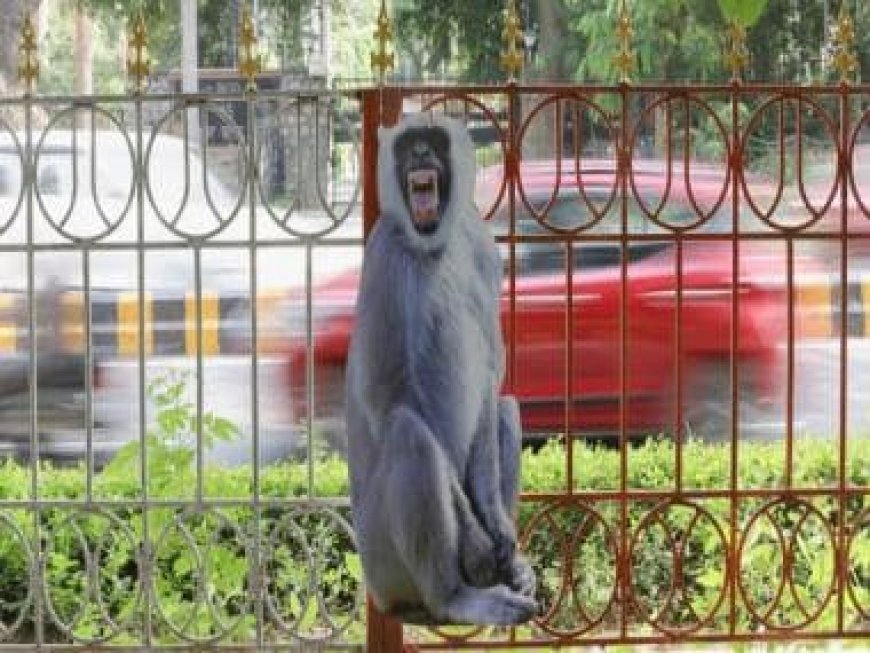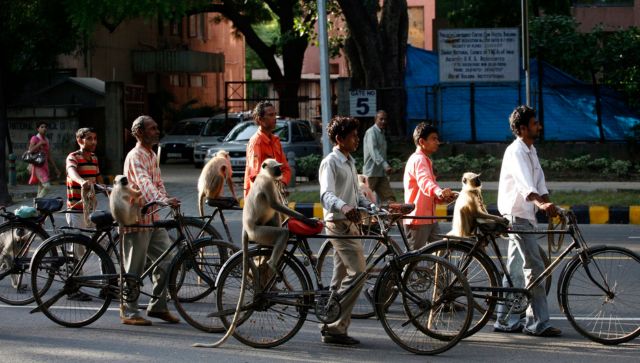G20 Summit: Are monkeys the big scare for leaders coming to Delhi?
G20 Summit: Are monkeys the big scare for leaders coming to Delhi?

From bolstering security to the beautification of New Delhi, India is making elaborate arrangements ahead of the G20 Summit next week. As more than 40 heads of state and leaders of global organisations converge in the National Capital for the high-profile meeting scheduled for 9 and 10 September, the authorities in Delhi have another problem at their hands – monkeys.
Rhesus macaque species has been a cause of headaches for Delhi for decades. Now, before foreign dignitaries arrive, the New Delhi Municipal Council (NDMC) has started installing life-size cut-outs of grey langurs – the macaque’s natural nemesis – to scare away the smaller monkeys from the routes of G20 venues.
Let’s take a look at this in detail and how Delhi’s monkey problem remains unresolved even now.
Will langur cut-outs keep monkeys away?
There are concerns that monkeys may disrupt the convoys of heads of state arriving in New Delhi for the G20 summit. Thus, the NDMC is coordinating with the Delhi forest department to ensure that monkeys stay within the forest region.
The langur cut-outs are being placed at Sardar Patel Marg and the Central Ridge area, reported India Today. A senior forest department official told Times of India (TOI) that these cut-outs will be moved regularly so that the monkeys believe they are real langurs.
Moreover, around 30-40 trained people who can mimic the sounds of langurs will be stationed at hotels where foreign dignitaries will be staying, along with places where monkeys are sighted.
“We can’t remove the monkeys from their natural habitat, so we have deployed a team of 30-40 men who are trained to scare away monkeys,” Satish Upadhyay, the vice-chairman of the NDMC, told the AFP news agency.
“The langur cut-outs have been put up on an experimental basis, and we will have to see how much actual impact they have on the monkey density,” he was quoted as saying by Hindustan Times (HT).
As per BBC, authorities are also planning to provide food for monkeys in certain sites, so that they do not wander in search of food.

However, experts have voiced doubts about these plans. Speaking to HT, Faiyaz Khudsar, the scientist in-charge of Delhi Development Authority’s biodiversity parks programme, said stationery langur cut-outs may not prove effective.
“Even if such an experiment is being undertaken, movement is a critical factor, and stationary cut-outs may not help. They should put up these cut-outs in large numbers as multiple replications will be needed to ascertain the impact,” Khudsar added.
During the 2010 Commonwealth Games, Delhi had adopted similar measures to deal with the problem.
ALSO READ: G20 Summit 2023: How NSG commandos will keep Delhi safe
Delhi’s monkey menace is old
It was in 2007 when Delhi started taking its monkey problem seriously. In October of that year, the then-deputy mayor, Surinder Singh Bajwa, fell from his terrace and died after being attacked by the simians at his home.
The Delhi High Court passed an order that year banning the feeding of monkeys and allowing the municipal corporations to fine violators, as per ThePrint report.
The Municipal Corporation of Delhi (MCD) also started catching the monkeys to relocate them to the Asola Bhatti Wildlife Sanctuary as per the High Court’s orders. So far, more than 21,000 monkeys have been shifted to the sanctuary, HT reported citing an official.
In 2014, months after the Narendra Modi-led government came to power at the Centre, the then housing and urban development minister, Venkaiah Naidu, told Parliamentarians that 40 professional monkey impersonators would be deployed around government buildings to tackle the menace, reported The Guardian.
An NDMC official had said at the time these trained persons mimic the sound of langurs to scare the monkeys.
However, even 16 years after the Delhi High Court’s order, the monkey menace continues to haunt Delhi.
Gurjeet Singh Aujla, a Congress MP from Punjab’s Amritsar, had told Mongabay in 2019, “For the last two years, I am living in the Meena Bagh area, which is next to the Parliament House. We face a terrible problem with monkeys. Though we have covered our houses completely the monkeys run wild and destroy whatever comes their way. We can’t even dry our clothes on the terrace outside.”
Previously, men with trained langurs used to patrol Delhi’s streets. But, the Delhi government stopped the practice in 2012 after complaints of animal cruelty by activists. Now, security guards use slingshots and sticks to ward off the monkeys in several parts of the city.

Why has the problem persisted?
Rhesus macaques have adapted to the urban environment in the National Capital. Their reign of terror continues in many parts, even causing harm to children. As per TOI, Delhi reports 1,000 cases of monkey bites every year.
According to Mongabay, the destruction of the natural habitat of wild animals and monoculture forests are the major reasons monkeys are moving to Delhi.
“Monkeys are not domesticated animals. The monkeys see a human and they see food. Their initial shyness of human beings is gone. When they don’t get food, they snatch. They have changed their way of living. We have changed them,” Iqbal Malik, one of India’s first primatologists, told ThePrint.
Asola sanctuary, the only place where monkeys caught from Delhi can be relocated, has also failed to retain the animal, noted the digital news outlet.
Despite plans, Delhi has not carried out any monkey census. In May, rhesus macaque species were removed from schedules of the Wildlife Protection Act (WPA), meaning the animal can be treated like street cats or dogs, as per HT.
What can be done?
Wildlife experts told ThePrint that reviving the natural habitat of the monkeys and relocating them as a whole group is the only viable solution. Although, it is an unenviable task.
Another solution is to dissuade humans from feeding these animals.
In November 2021, Delhi said it does not plan to sterilise the simians but will train monkey catchers. However, it does not seem that the National Capital will be rid of the ‘monkey business’ anytime soon unless concrete measures are taken.
With inputs from agencies
What's Your Reaction?



























































